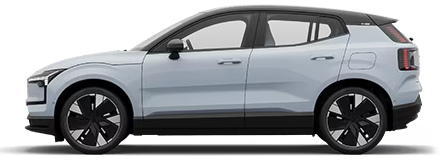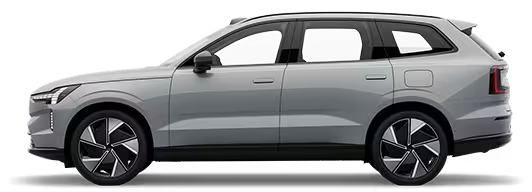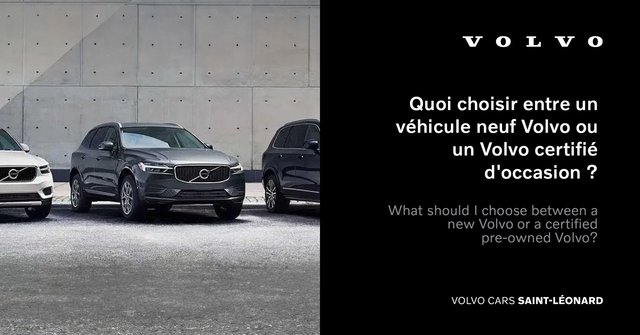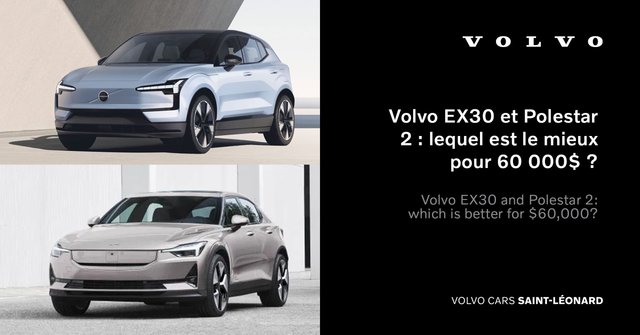Check out the first images of one of our first 2025 Volvo XC60 Plug-In Hybrid in the Onyx Black Metallic color and POLESTAR ENGINEERED edititon. Stock: V25332 Visit our new vehicle inventory
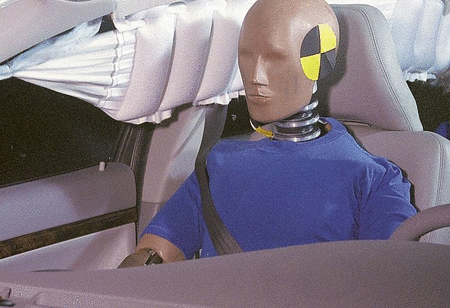
Volvo, the automotive safety pioneer
Safety has always been Volvo's number one priority. The Swedish car manufacturer even set itself a very ambitious objective in this area: by 2020 no one should be killed or seriously injured in a new Volvo car. But this strong involvement in automotive safety is nothing new. For decades, the brand indeed put a lot of effort into making roads safer. Focus on the greatest safety innovations developed by Volvo.
1959: Three-point Safety Belt
The three-point safety belt saved an immeasurable number of lives and is now mandatory on every new car. But long before it became a standard safety feature, it was a genuine revolution when it was created by Volvo Engineer Nils Bohlin back in 1959. Aware of the humongous life-saving potential of the three-point safety belt, Volvo waived its patent rights so every car manufacturer could use it freely. Since then, it's estimated that over one million lives have been saved as a result of the Swedish brand's decision.
1972: Rearward-facing Child Safety Seat
Remember those early images of astronauts lying on their backs during take-off to even out the forces? Well, that was the basic principle behind Volvo's rearward-facing child seats, to spread the load and minimise injury. Then Volvo innovated in 1976 with the child booster seat and again in 1990 with an integrated booster built right into the seat.
1991: Side Impact Protection System (SIPS)
Another major step forward for safety came with Volvo's Side Impact Protection System, or SIPS. This was an integral part of the car's design and included a very strong structure and energy-absorbing materials on the inside, a cross member in the floor and even reinforced seats. Volvo followed that up in 1994 with another world first, side-impact airbags.
1998: Whiplash Protection System
Whiplash is a painful injury that can lead to paralysis in certain cases. It's also quite common, so we focused on reducing low-speed collision injuries. The system consists of a very robust headrest close to the occupant's head and a clever seat design that gives uniform support in a collision. The result is that the risk of long-term medical problems are half what they were.
1998: Inflatable Curtain
The inflatable curtain was yet another leap forward in safety for Volvo. It's concealed in the headliner and runs from the front to the rear of the cabin – in the event of a side impact, the curtain inflates in just 25 thousandths of a second and can absorb 75% of the energy generated when the head is thrown sideways.
2002: Roll-Over Protection System (ROPS)
With the growing popularity of SUVs, Volvo reckoned it was time to introduce its next safety innovation – rollover protection. The manufacturer tackled the problem from two directions. Firstly, Volvo enhanced its SUVs' stability with a sophisticated electronic Roll Stability Control system and secondly, it improved the car's safety structure with extremely tough boron steel in the roof.
2003: Blind Spot Information System (BLIS)
When drivers change lanes, a moment's inattention can have catastrophic consequences if the driver hasn't spotted another car in the blind spot. So Volvo decided that its cars would watch out for trouble, too – its BLIS system uses cameras and radar to watch for vehicles alongside and offset to the rear of the Volvo. When a car enters the blind spot area, a warning lamp comes on near the door mirror, giving the driver ample time to react.
2008: City Safety
In 2008, Volvo became the very first car manufacturer to implement an autonomous emergency braking system in its cars. Named City Safety, this technology has been greatly improved since and is now able to detect pedestrians and to fully stop the car.
2014: Run-off-Road Protection
Run-off-road is behind half of all traffic fatalities in the United States. Volvo was again the pioneer testing road departure crashes – often the result of fatigue, poor weather conditions or a lack of driver's attention. The manufacturer focused on keeping occupants firmly in position, introducing unique "energy-absorbing" functionalities in the seats that can mitigate spine injuries.
2016: Connected Safety
Volvo is defining a completely new type of road safety system in a world of connected cars. Its latest connected innovations - Slippery Road Alert and Hazard Light Alert - use the cloud to share critical data between vehicles, alerting the driver about slippery road sections or vehicles that have activated their hazard lights - providing the driver with enough time to slow down.
Thus, if you want to drive the safest cars on the market, Volvo vehicles are the best choices you can make. Don't hesitate to ask us your questions online or in person at John Scotti Volvo, your Volvo dealership in Montréal, located near Laval.
Other Articles That May Interest You
When it comes to buying a new Volvo, you have two options: shop new and leave the dealership with a brand new car with zero kilometres, or take a look at used cars and drive a used Volvo at a bargain price. In this respect, the choice between buying a new or used vehicle has become much tighter. At Volvo Saint-Léonard, it's not uncommon to find low-mileage used cars with warranties greater than...
Since 2020, Volvo and Polestar have been two separate brands within the Geely Group. Polestar, formerly the sporty arm of the Swedish brand, has become a fully electric brand in its own right. To date, 3 models are on offer, ranging from saloon to SUV, with the aim of offering a different experience to what Volvo can do today. So the question is: if you had $60,000 to spend on a new electric...






